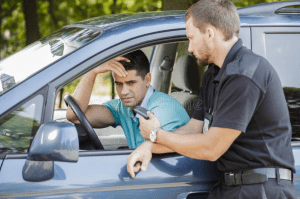Driving too fast or driving too slow, what is more dangerous? The truth is both. We know either one can potentially lead to accidents. However, is driving slow more dangerous than speeding? Let’s take a closer look.
 Driving too fast
Driving too fast
Firstly, driving too fast can be incredibly dangerous as it increases the chances of losing control of the vehicle, especially in adverse weather conditions. Additionally, speeding reduces the amount of time a driver has to react to unexpected obstacles or hazards on the road, such as pedestrians, animals, or other vehicles. This can lead to collisions and potentially fatal accidents. Speeding is also a contributing factor in how severe a car accident can become. It is common sense that, the faster the car is going in an accident, the worse the collision.
Driving too slow
On the other hand, driving too slow can also be hazardous. When drivers travel significantly below the posted speed limit, they can disrupt the flow of traffic and cause congestion. This can lead to frustration and aggressive driving behaviors from other drivers who may attempt to pass unsafely or tailgate. Driving too slow can also cause unexpected braking, which can increase the risk of rear-end collisions. Additionally, driving too slow on highways and freeways can cause a bottleneck effect, leading to multi-vehicle accidents.
Furthermore, very slow driving is especially dangerous when on highways and freeways, where vehicles typically travel at higher speeds. Slow drivers on these roads can cause a bottleneck effect, increasing the likelihood of multi-vehicle accidents. The Federal Highway Administration reports that driving slower than the posted speed limit on highways can be just as dangerous as speeding.
What is more dangerous?
Most everyone knows that both driving too fast and too slow can be dangerous and lead to accidents but to answer what is more dangerous, it is speeding. According to the National Highway Traffic Safety Administration, speeding is a contributing factor in approximately 26% of all traffic fatalities in the United States. While driving too slow can cause congestion and increase the risk of rear-end collisions, it is not as prevalent as speeding-related accidents. Therefore, while driving too slow can be hazardous, driving too fast causes more accidents and more fatal accidents.
Driving Defensively
It’s important to always drive at a safe and appropriate speed for the conditions and obey posted speed limits. Additionally, drivers should stay alert and aware of their surroundings, avoid distractions, and use defensive driving techniques to anticipate and avoid potential hazards on the road. Remeber if you or someone you know needs to improve on their defensive driving, they can do so online by taking a course. This can help drivers stay up to date with the latest safety practices and laws. Remember, safety on the road is everyone’s responsibility.
Wondering where to get your online defensive driving course? Just click here. Comedy Defensive Driving has been teaching for over 30 years and is one of the most trusted online courses. On top of brushing up on your defensive driving, it can also be used to dismiss a ticket, reduce driving points and/or lower your insurance payments. Dont wait you can get started today. It is go at your own pace and mobile friendly. Just click here to register and get started. Happy driving!

